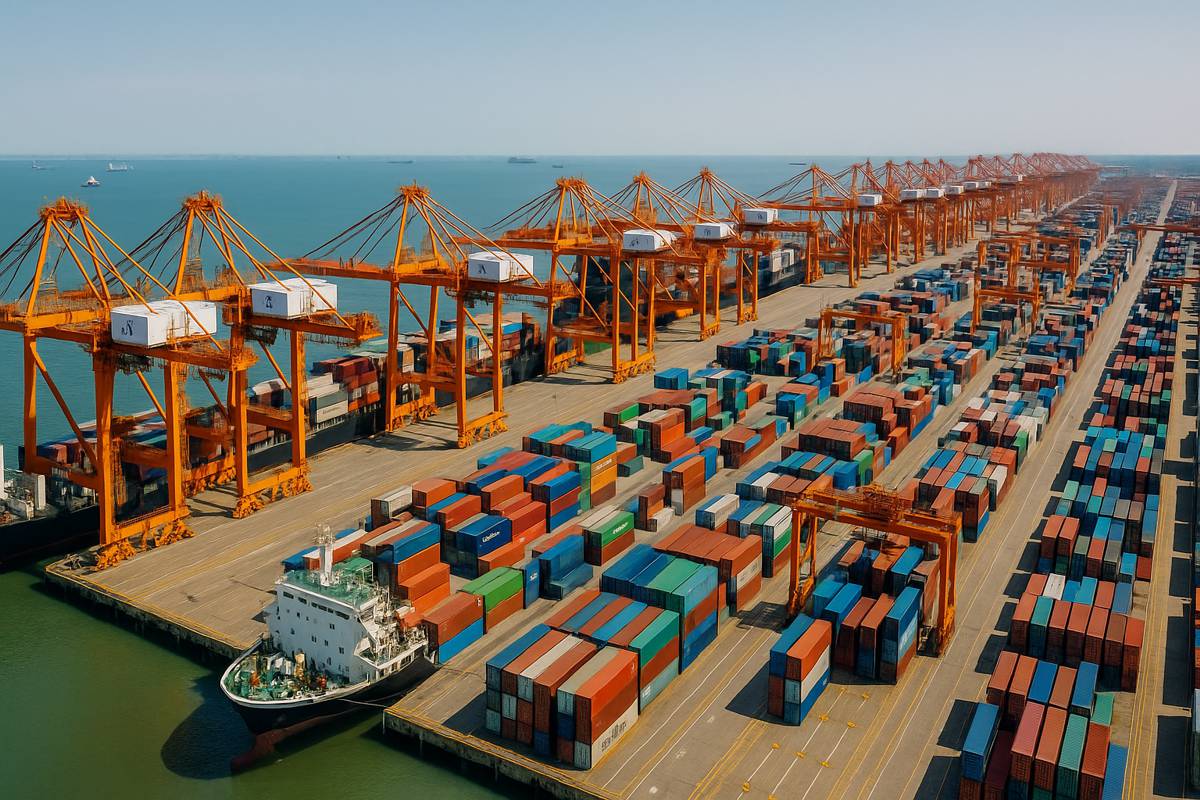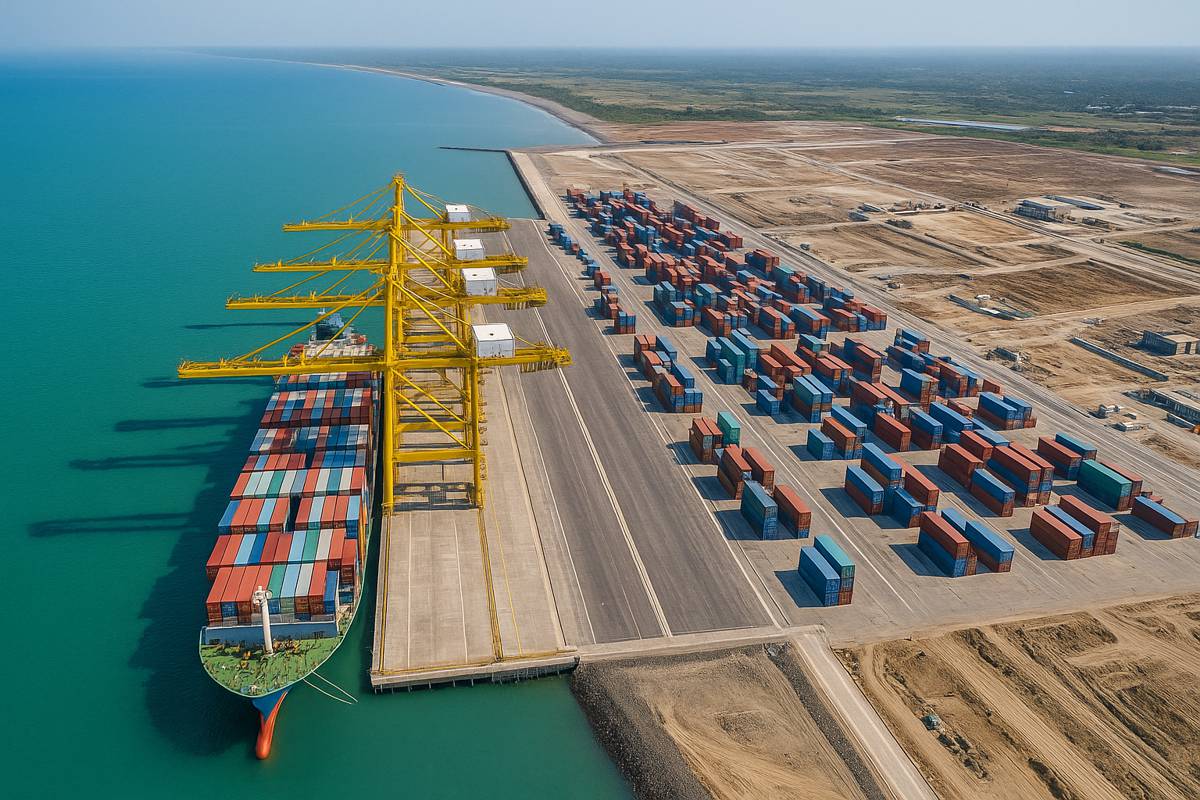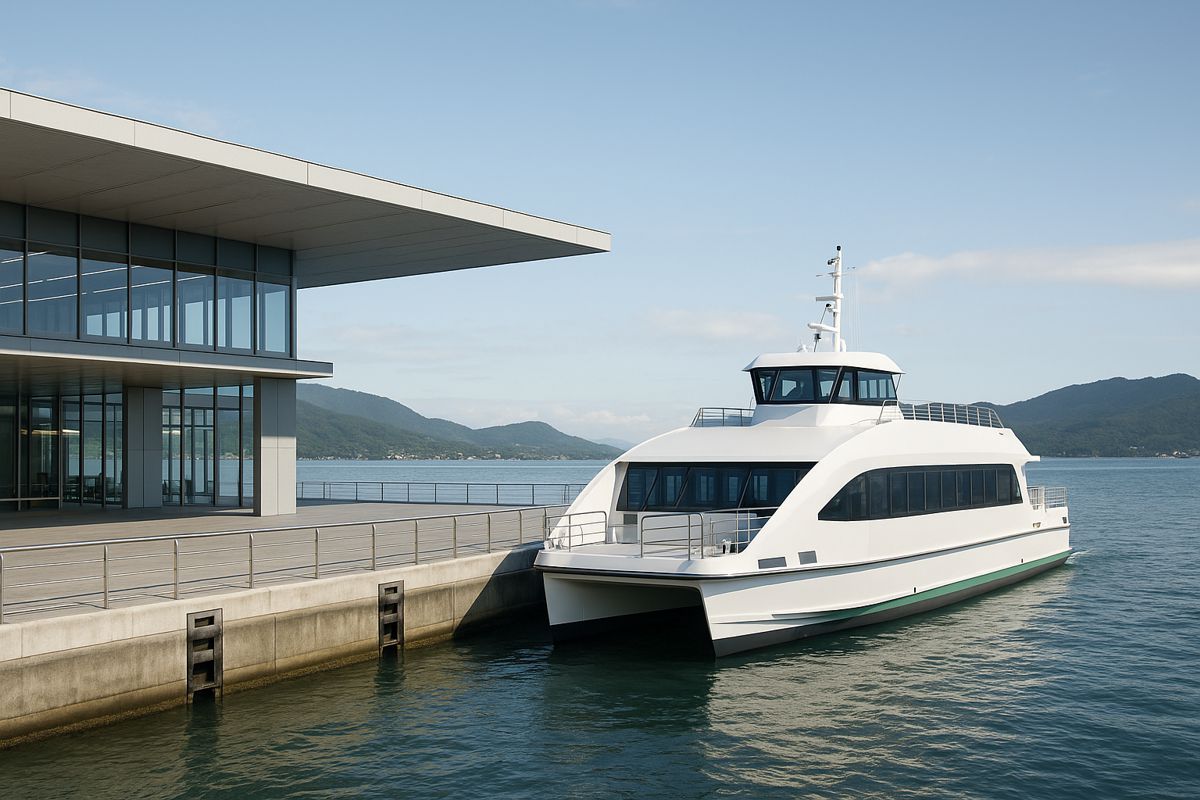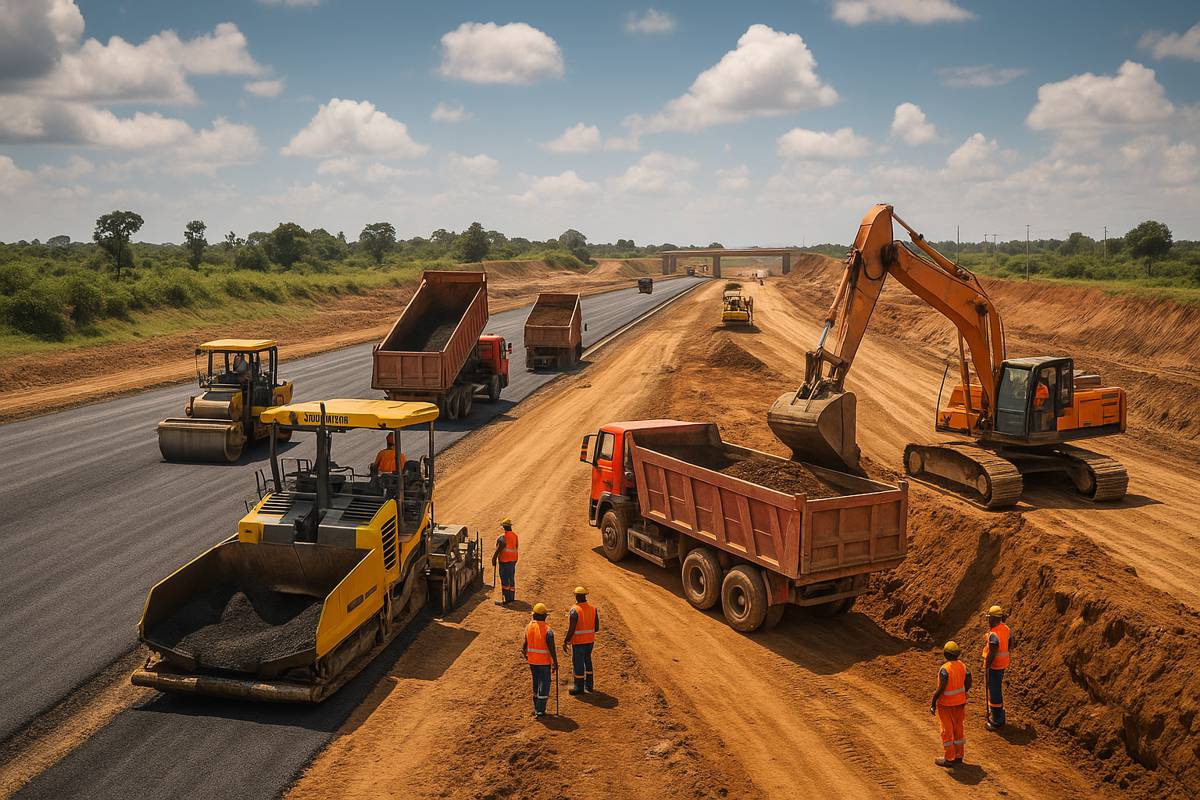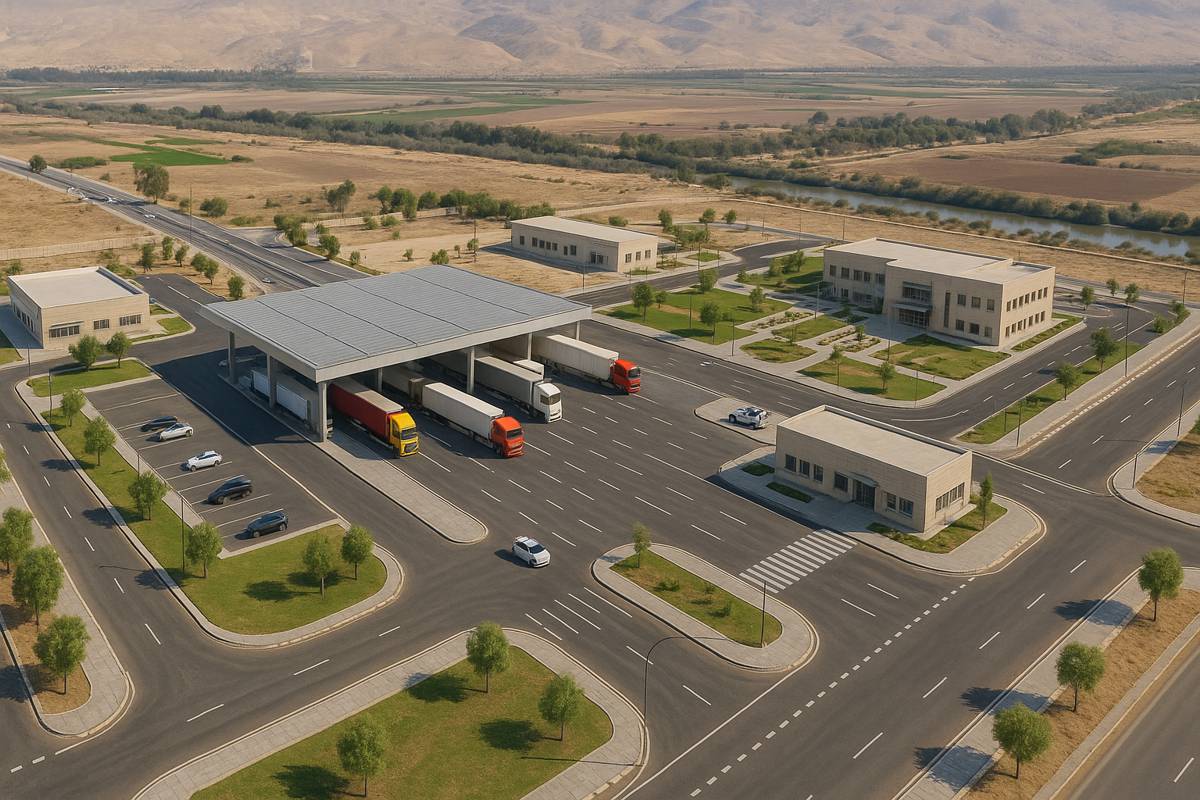How China’s Smart Ports are Transforming Global Infrastructure
China’s rapid development of automated port infrastructure has transformed global maritime trade and logistics. With 60 fully automated container terminals already operational and more under construction, the country has set a benchmark for efficiency, scale, and sustainability.
According to the Ministry of Transport, China now manages nine of the world’s ten busiest ports, handling more than 17 billion tonnes of cargo and 330 million TEUs in 2024 alone.
These figures aren’t just impressive; they illustrate a seismic shift in how global ports operate. China’s ports, including Shanghai, Ningbo-Zhoushan, and Qingdao, have evolved from traditional logistics hubs into intelligent, integrated trade ecosystems. By merging advanced automation, digitalisation, and sustainable construction, these ports are driving a new era of smart infrastructure.
Li Shenglin, former Minister of Transport, summed up the nation’s strategy: “Modern port development must align with technological innovation, environmental protection, and international cooperation to serve both domestic and global economic growth.”
Engineering the World’s Smartest Ports
The scale of China’s automated port infrastructure is staggering. The Yangshan Deep Water Port in Shanghai, for example, is one of the world’s largest automated terminals, featuring over 130 unmanned guided vehicles (AGVs) and AI-driven cranes capable of loading and unloading massive container ships around the clock. These facilities integrate artificial intelligence, 5G connectivity, and digital twins to monitor and optimise every step of cargo handling.
At the heart of these projects lies a sophisticated network of smart logistics systems. Port authorities employ real-time analytics and predictive algorithms to balance vessel traffic, automate gate operations, and streamline customs clearance. In some terminals, drones are deployed for surveillance and inventory management, reducing labour costs and increasing safety.
The Ningbo-Zhoushan Port, which handled over 1.3 billion tonnes of cargo in 2024, stands as a prime example of how technology and construction engineering intersect. The port’s smart scheduling and autonomous stacking cranes have improved operational efficiency by nearly 30%. Additionally, new expansions include dedicated offshore wind power facilities, reinforcing its commitment to clean energy.
Sustainable Construction at Scale
While automation captures headlines, sustainability has quietly become the cornerstone of China’s port strategy. Ports like Tianjin and Xiamen have implemented onshore power supply systems that allow berthed ships to shut down diesel engines and plug into local grids, drastically reducing emissions. Similarly, the Dalian Port’s green terminal projects use renewable materials, efficient water management systems, and solar-powered lighting.
China’s Ministry of Transport has also launched initiatives to ensure that future port expansions meet strict environmental standards. These include the use of modular construction for new terminals, reducing both cost and carbon footprint. Moreover, artificial islands and coastal reclamation projects are now engineered using eco-friendly methods to preserve marine biodiversity.
A 2025 report by the China Ports and Harbours Association highlights the impact: “The integration of green construction materials, renewable energy, and intelligent systems represents a sustainable path for global port development.”
The Belt and Road Impact
Beyond domestic development, China’s port expertise has become a cornerstone of its Belt and Road Initiative (BRI). Through partnerships and joint ventures, Chinese companies have built or upgraded dozens of ports across Asia, Africa, and Europe. From the Gwadar Port in Pakistan to the Piraeus Port in Greece, Chinese engineering and financing have helped modernise critical nodes in global maritime logistics.
These overseas projects follow the same model of smart design and high efficiency that defines China’s home-grown terminals. They’re equipped with automated cranes, advanced dredging systems, and AI-driven management platforms. However, they also carry strategic weight, strengthening trade routes and ensuring China’s influence in global supply chains.
According to the Centre for Strategic and International Studies, China has invested more than US$70 billion in overseas port construction since 2013. These investments, coupled with domestic upgrades, are reshaping global logistics patterns, making ports faster, greener, and more interconnected.
Linking Ports, Roads, and Rail
China’s port development strategy doesn’t operate in isolation. It’s deeply intertwined with the country’s massive investment in road and rail infrastructure. New expressways, logistics parks, and high-speed freight corridors ensure seamless transport between inland manufacturing hubs and coastal ports.
For instance, the Shanghai-Chongqing Expressway and the Yiwu-Madrid freight train route symbolise how integrated logistics can dramatically shorten delivery times. The combination of multimodal connectivity and smart management software is creating what experts call an “end-to-end intelligent supply chain.”
By investing in both physical and digital infrastructure, China is addressing one of the global industry’s biggest bottlenecks: last-mile efficiency. Every container that moves from factory to vessel now benefits from synchronised logistics systems and real-time data sharing between port operators, trucking companies, and customs agencies.
The Global Benchmark
What makes China’s port infrastructure truly distinctive is its commitment to continuous innovation. Through collaborations with domestic tech giants such as Huawei, ZPMC, and Alibaba Cloud, ports are testing next-generation systems for predictive maintenance, automated documentation, and blockchain-based cargo tracking.
China’s dominance in port construction also influences global standards. The International Association of Ports and Harbours (IAPH) now references Chinese models for smart terminal automation and sustainability benchmarks. Western and Asian ports are increasingly replicating these design and operational frameworks to stay competitive.
At the same time, Chinese construction firms like China Communications Construction Company (CCCC) and Shanghai Zhenhua Heavy Industries (ZPMC) are exporting port equipment and expertise worldwide. This global reach cements China’s position not only as a trade superpower but also as a technology leader in infrastructure engineering.
Charting a Smarter Maritime Future
China’s rise as the world’s leading port builder underscores how infrastructure investment can drive technological innovation and global trade. Its fusion of automation, sustainability, and strategic connectivity sets a template for future maritime development.
While the pace of change is extraordinary, the underlying philosophy remains simple: build smarter, operate cleaner, and connect faster. As trade volumes surge and climate targets tighten, other nations will increasingly look to China’s blueprint for inspiration on how to modernise their own ports and logistics ecosystems.
